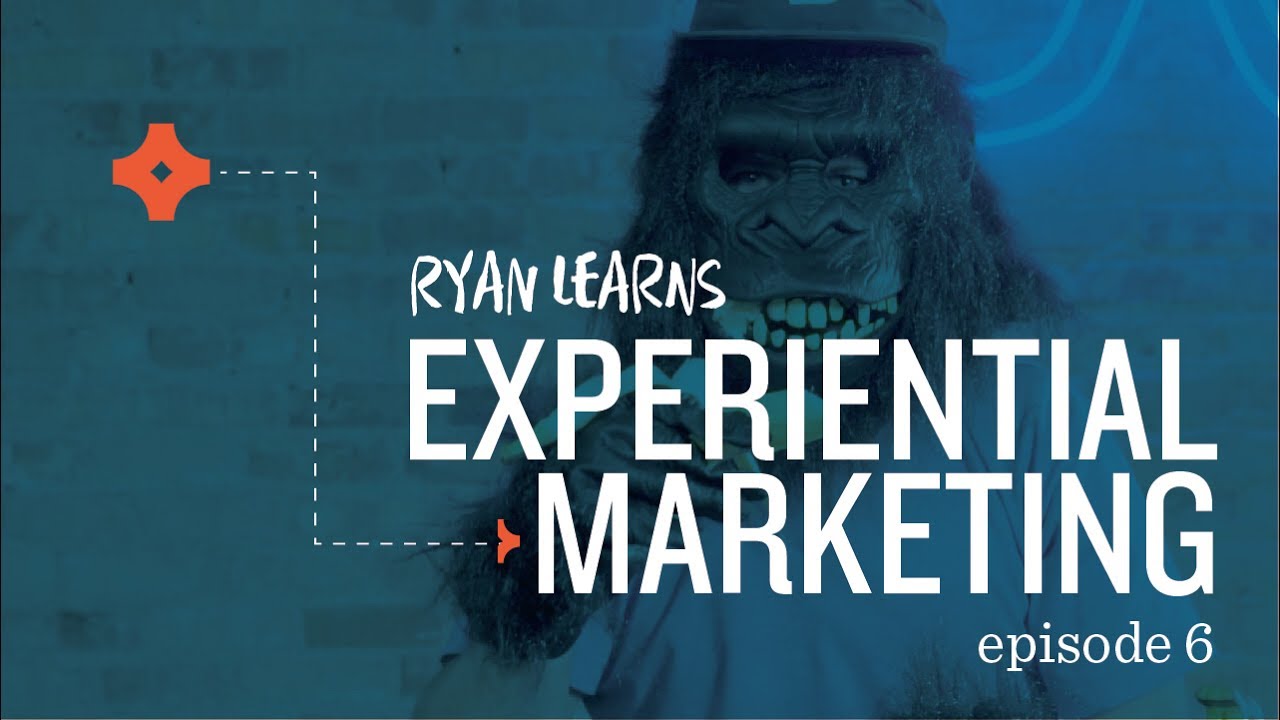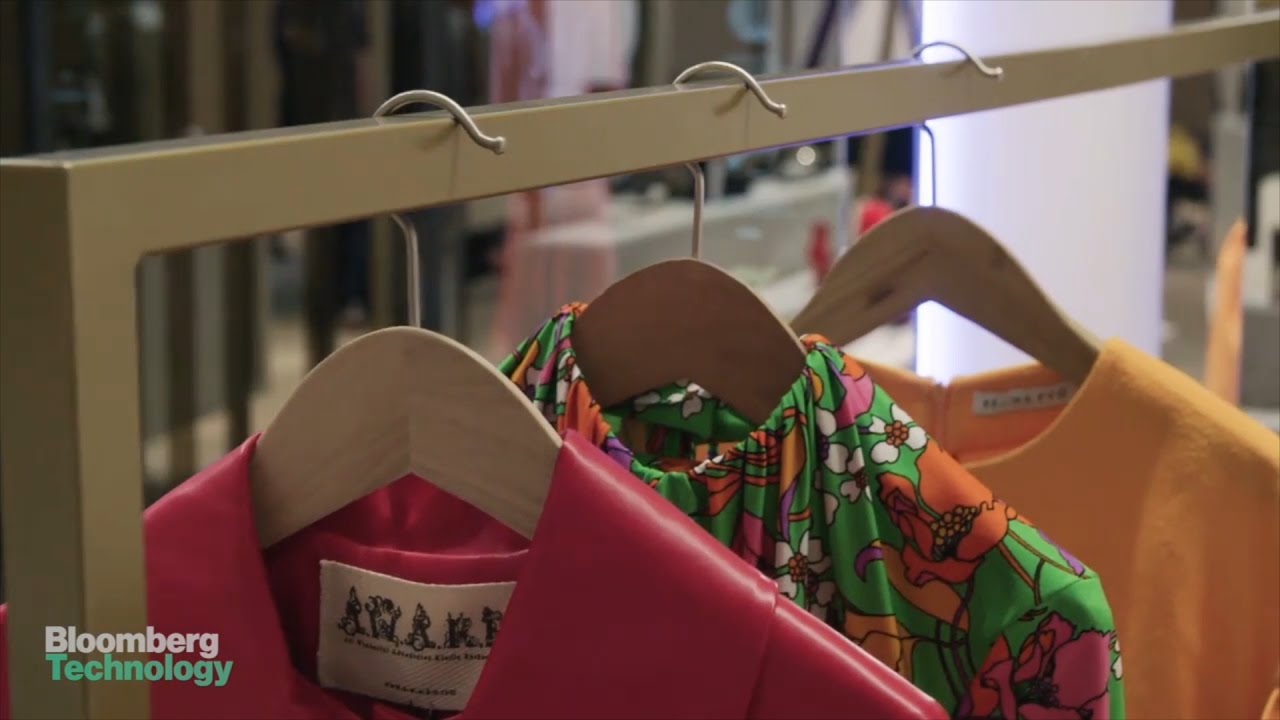Successful businesses of today and emerging consumer behaviour trends
Money makes the world go round.
Today the world spins slower for some businesses, it takes a break or even ends, unfortunately.
But other businesses are flourishing now as there is always an opportunity in every crisis.
It is not the strongest of the species that survives, nor the most intelligent that survives. It is the one that is most adaptable to change.
Charles Darwin
The same goes without saying for the business jungle in capitalism.
It seems that the most successful companies are either present at the right moment, are creatively adjusting to the circumstances bringing along innovations or they are rich enough to weather the storm.
Here is a shortlist of the industries in the US and worldwide that have risen lately or remained successful today. They are listed in a more or less order of importance and are followed by a few new trends in consumer behaviour in the business environment in Romania.
Winning industries
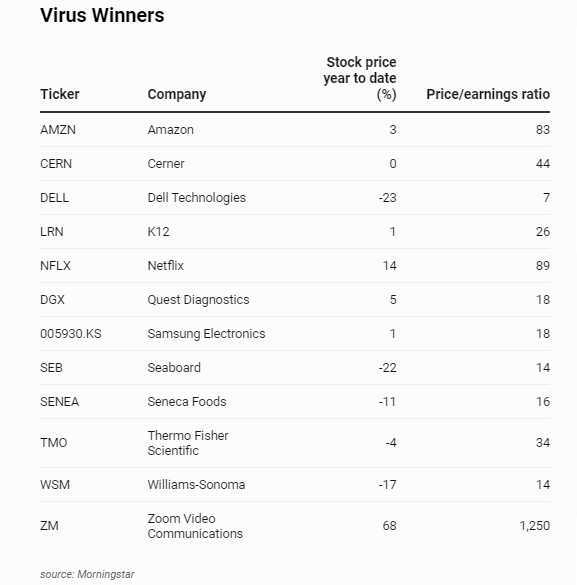
Image source: Forbes
To begin with, this is a radiography of the most important players at the beginning of March 2020.
Experiencing the work-from-home economy
HOME, a word that has been used too often lately, generally associated with the construction/furniture/design industries and the family concept is now correlated with business, jobs and as well with spending the spare time during coronavirus lockdown.
It seems every generation lived through a crisis, and we are not spared either. The difference is that the causes are more subtle nowadays, as the effects are always serious. What began as a trend not long time ago, especially in the IT business – the work from home system, has now quickly spread all over the world and created the so-called work-from-home economy.
Teleconferencing
The most used teleconferencing system, Zoom is now a synonym for remote work. No wonder its stock exchange exploded in 2020.
Founded in 2011 by the Chinese Eric Yuan, it took Zoom only 8 years to reach 2,532 employees, $622 million revenue and $21 million net income in 2019.
Before coming to Silicon Valley and working for Cisco Webex as an engineer, Zoom founder Eric Yuan was denied a visa by the US government 10 times.
The second most known winner in the same industry is Webex – Cisco Systems.
Besides teleconferencing, cloud computing, software and cybersecurity companies have also been increasing.
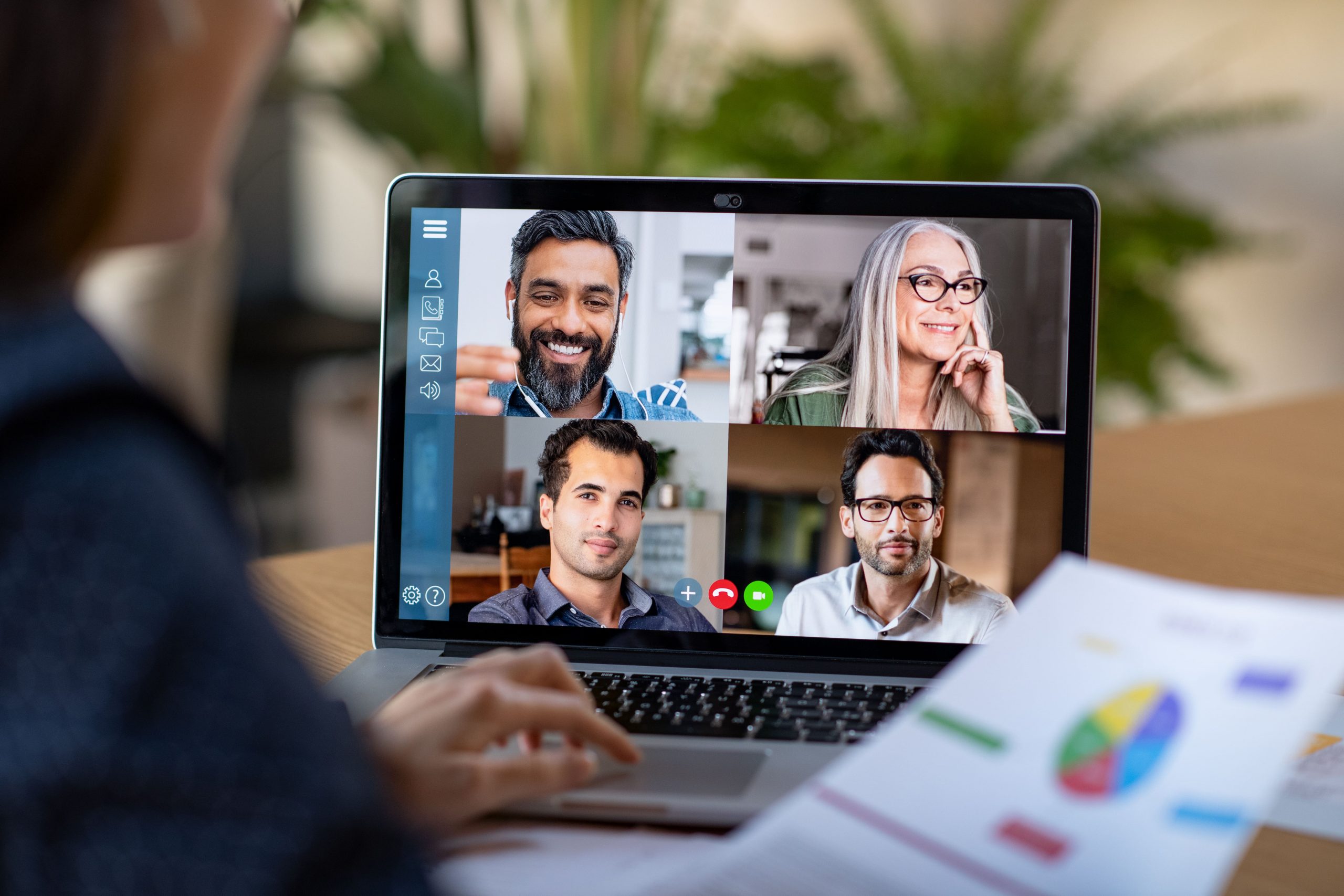
Home entertainment
Netflix, the films and television programs streaming service is no doubt the solution of choice in home entertainment.
The company was founded in 1997, in California and came to Romania only in 2016. With 169 million users worldwide, it reached in 2019 an amazing revenue of $20.156 billion and a net income of $1.866 billion.
After Netflix, it seems that more people are turning towards video games, as the young and the adults as well play a lot these days.
Healthcare
We are talking here about a huge system, ranging from medicines, protection materials to virus tests and the vaccine industry.
Thermo Fisher Scientific, for instance, is a player in the medical testing equipment industry. Today the medical dictionary is adding new words as we are already talking about AI-based platforms that use voice to detect & monitor the health status, or telemedicine services – virtual medical services.
We are also seeing an increase in competitor collaboration, as GSK and Sanofi, two of the world’s biggest pharmaceutical companies, are joining forces to create a COVID-19 vaccine.
Online education
As schools close, K12 is the winner in the US, a company which delivers software-based educational services.
A global trend lately, the education has moved online in an accelerated rhythm, universities worldwide have more and more online training options and there is an abundance of webinars, online classes and trainings.
A great variety of online classes makes it now easier than ever to learn whatever you wish: there are platforms that bring huge education resources under the same umbrella such as Udemy or platforms concepts that reunite world top experts such as Mindvalley, Gaia or Masterclass.
One might find it a little bit overwhelming, as there is an avalanche of information and technology that our brain begins to cope harder with. The situation is also creating the feeling of not having enough time to process or to integrate the information.
Telecom companies
As we are staying home, the need to talk to our family and friends and as well as with the work team is more powerful. That ensures the stability of the telecom industry at this moment.
Consumer goods
Even if they do not really need to, people are buying more lately. Amazon and Alibaba online marketplaces rule worldwide.
The Los Angeles Times has announced that Amazon.com stock climbed 5% last week, increasing Jeff Bezos’ empire with $ 24 billion in the first three months of this year.
In the US, Williams-Sonoma, a retailer of food home preparation gear, Seaboard Corp., a seller of food commodities and Seneca Foods Corp., a producer of frozen and canned foods are the market segment leaders.
Walmart’s sales have also increased by 5% since the beginning of the year.
Johnson & Johnson, specialized in pharmaceutical and consumer goods and its competitor Procter & Gamble are also recording higher sales.
Electronics & IT products
In the US, Dell Technologies is in top sales in its segment as employers are upgrading the laptops their employees use to work from home and Samsung Electronics continues to sell phones and TVs.
Banking – contactless payments
Be it online, by card or by mobile, the digital payments technologies are experiencing a new boom at this moment. As a result, tracking payments and gathering data on customer preferences will be more precise.
A few trends in the Romanian business environment and consumer behaviour
At a certain moment, hopefully soon, life will go back to normal. But it will be a whole different normal as things will never be the same again.
Living and doing business in Romania have already changed, hence consumer habits have changed, too.
People are reconsidering their lifestyle, the way they perceive the world and their personal values.
They are enjoying family experiences, they spend more time with partners and kids. They communicate more with friends. Online school has become the norm.
In the last years, the classic television consumption has decreased step by step. But if we are to compare March 2019 and March 2020 figures, the following result emerges: there are 360.000 more viewers at the national level and the total audience watching TV in the evening (prime-time) in March reached 8,6 million out of a total population of 22,175 million (Romania’s population at January 1st 2020). Of the 360.000 persons, 250.000 are urban viewers.
The video streaming platforms Netflix and HBO Go have also reached high usage levels. No data available for Romania for 2020 regarding the percentage increase, yet at the end of 2019, a study on urban media consumption habits showed that 7 Romanians out of 10 have at least one video streaming subscription.
Less is more. People think twice now before spending their money. They hope for the best while preparing for the worst.

Romanians are cooking and baking more at home. The internet buzzes with homemade food and deserts pictures. We are suddenly realizing that we can cook healthier and cheaper at home. In the weeks before Easter, a shortage of yeast occurred; it was so unusual to see the message “updated yeast stock” on a grocery website.
When talking about learning habits, we are experiencing a technology learning boost as people are using a greater number of applications and in a more intense rhythm than before. Many older people are also trying to make up for the gap between them and the young when using modern technologies.
It is very likely that some of the temporary changes and adaptations that we are undergoing now will become permanent. For sure companies will be more open from now on to videoconferencing services and to remote work systems as going to the office means spending time and money.
More offline businesses are moving online and they do it in an accelerating way, forced by the situation.
A lot of selling platforms appear as a business opportunity to facilitate and capitalize on the new wave of offline-online transition. At a larger scale, I’ll mention the Elefant Marketplace initiative, a place companies can sell online and also benefit from the existing logistics services. Emag remains the leader marketplace in Romania with 16.350 active sellers and group revenue of RON 4,77 billion (in 2018).

At a smaller scale, we are witnessing the appearance of many online platforms and the usage of social media as selling channels for local, independent small businesses. First, there were greenery and vegetables supplying services, now farming products such as meat, cheese or milk are going online. Besides, the online groceries number has increased in a very short period of time.
I am glad to see there is now an increasing preference for local and made-in-Romania products and that the business-to-consumer chain is becoming shorter. Business people and big retailer chains are becoming aware that stocks are also easier to update when collaborating with local suppliers.
Previously niche industries are becoming a normal standard – food and goods delivery companies such as Glovo, Foodpanda, UberEats, Bringo and Takeaway are gaining more popularity.
People and businesses are reinventing themselves right now, they respond quickly to the situation challenges. They are either innovating the existing offer of products and services, either reinventing 180 degrees the businesses models.
For instance, transportation companies such as Bolt and Free Now (ex Clever) are launching Business Delivery services to connect the suppliers with the end consumers and increasing their brand awareness by offering free rides for medical personnel. they are also going to fit their cars with protection screens set between the driver and the clients.
Everybody is selling or producing face masks – starting with clothes manufacturers to the neighbourhood-tailoring little companies.
They say the Romanians are inventive and witnessing many total business shifts proves that right. Now it is not important what you sell, but to sell nonetheless: from watches to FMCG, from toys to face masks and medical protection equipment, from events organizing to delivering weekly cooked food subscriptions. A Romanian bus manufacturer switched to disinfection tunnels. A state-owned arms manufacturing company has adapted its production and will begin to make protective masks.
New ways of advertising emerge now. I don’t think I’ve seen so many free trial products/services before or so many free resources for short term access. The video content continues to rise.
The electronic signature is beginning to be accepted in official documents with public authorities and institutions.
Accessing start-up funds and European funds are still available instruments in the actual business environment.
At the end of March, the total internet traffic in Romania increased by 12% in mobile networks and 20.9% in landline networks, while voice traffic recorded average increases of 22% in mobile networks and 22.7% in landline networks (source).
It seems that now we talk more on the phone at noon than in the evening, and in some networks, voice and data traffic no longer have high values in the morning and evening, but have become linear throughout the day.

Instead of conclusion
Here are two questions that don’t want to leave my mind these days:
Can’t stop wondering, yet in the end what are the real companies – the economic giants and who are the persons/powers that will benefit the most from people’s health problems and the economic crisis? These are open questions for anyone who wants to put the puzzle pieces together. I cannot stop thinking either how fragile our life is.
And what about the consequences of the social distancing/working-from-home trend on an anthropological level? I know, superficially said, as first reactions, maybe more divorces and maybe more children at the end of the state of emergency. But I mean at a deeper level, regarding future human behaviour.
Mark Mason, BRAND MINDS 2020 speaker (the event was rescheduled for September 25th) has recently launched the FOGO concept (the fear of going out), starting from FOMO – the fear of missing out.
FOGO is the inversion of FOMO. Whereas someone with FOMO feels constant anxiety that they may be missing out on something spectacular by staying in, people with FOGO live with constant anxiety that they are guaranteed to miss out on something horrifying by staying in.
Mark Mason
Joe Dispenza and other scientists say you need 21- 30 days to install a habit, to rewrite a neuronal path and a few months of practice to make it last.
It seems that we are going to experience the “stay-at-home” state long enough to create and enhance new habits. Another open question…. Time will show us quite soon.
Stay safe. Be well.
Join the Conversation
We’d love to hear what you have to say.
Get in touch with us on our LinkedIn Group, Facebook Group or Twitter.
The Health & Fitness Industry Is Estimated To Reach $100 Billion In 2019
This is article #3 of our new series of articles: the Growing Industries series. This series includes articles focused on industries that have experienced continuous growth in previous years to give you valuable insights and inspiration.
Check out our previous articles:
The Gaming Industry – No Longer A Child’s Play
and
The Petfood Industry Is Growing At A Fast Pace.
The Health & Fitness industry is growing at a rate of 10% CAGR and is estimated to reach $100 billion in 2019.
According to the Global Health and Fitness Club Market report, the global health & fitness market revenue reached a total amount of $87.2 billion in 2017 and is projected to grow at a rate of 10.6% between 2018 and 2023.
[bctt tweet=”The Health & Fitness Industry Is Estimated To Reach $100 Billion In 2019″ username=”brand_minds”]
Here are the main findings of this report:
- Consumers are willing to spend more on health and fitness clubs;
- The number of health clubs and gyms with personal training and the latest fitness equipment has increased;
- Yoga, aerobic dance, and swimming have grown in popularity among health and fitness enthusiasts;
- Awareness about the benefits of physical fitness has increased;
- One of the driving factors leading the growth of the industry is the rising cases of obesity especially in developed countries;
- The millennial and baby boomers are joining fitness clubs in raising numbers;
- Corporate wellness activities have seen a growth in demand.
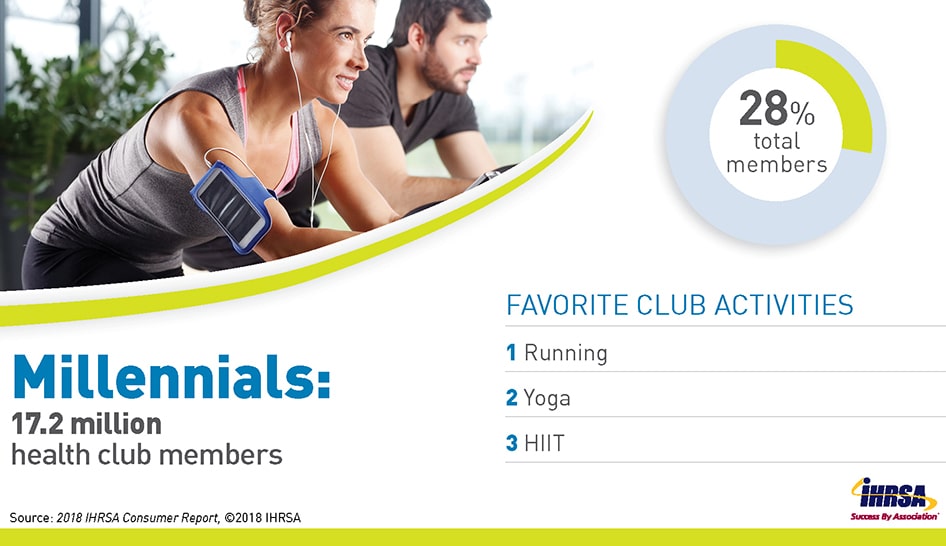
image source: ihrsa.org
The following 5 factors contribute to the health & fitness industry’s growth according to industry analysts:
1.Lowering of the health insurance costs
Healthy people drive insurance costs down and are less of a risk to insurance companies and employers.
Many employers incentivize their employees towards adopting a healthier lifestyle by covering the costs of a health club membership.
2. Increased demand for healthy foods
One of the most common memories we all have of our childhood is our mother telling us Eat your vegetables!
As children, we refused to eat any of the green stuff on the plate, but as adults, we are purposefully looking to eat more healthy foods.
In recent years consumer behaviour has seen a shift in demand: consumers are buying less industrial-scale processed food and more natural or bio foods.
3. Wearables support our decision for a healthier lifestyle
Wearable devices such as Fitbit, Apple Watch and many of the smartphones currently on the market are all helping us achieve our health objectives.
They play the role of personal digital assistants who promptly deliver personalized biometric health statistics. They help us keep track of our progress and steer us towards success.
4. Newfound freedom by streaming exercises classes
People have busy lives.
Women often juggle many activities every day while being mothers, wives, elderly caretakers and employees – all at the same time.
Being free to choose their preferred time to exercise instead of building their schedule around it is key to maintaining a healthy lifestyle. People are streaming fitness exercises classes to save time.
5. Attending outdoor obstacle races and competitions
Competing in outdoor obstacle races beats the ordinary running on a treadmill at the gym.
It’s much more exciting and the competitors feel the adrenaline rush closing on the finish line.
Through mud and water, on sand or grass, these races have been growing in popularity in recent years. The catch is – you need to train for them. That explains the growing demand for wearables and fitness classes.
![]()
5 Top Trends in the Health & Fitness Industry:
- Fitness trackers;
- Bodyweight training;
- Fitness programs for older adults;
- HIIT workouts (high-intensity interval training);
- Group training (a class with more than five people).
Top 3 Countries by Revenue according to IHRSA:
USA – $30 billion
Germany – $5.6 billion
United Kingdom – $5.5 billion
Top 3 Countries by Membership:
USA – 60.9 million
Germany – 10.6 million
United Kingdom – 9.9 million
Behaviour changes have given rise to new key groups in the UK:
- FIT Gen, 25-34-year-olds who prefer varied exercise experiences, in and out of the gym;
- Wellthy Gen, 35-44-year-olds who are striving to enhance their wellbeing by living an interconnected holistic lifestyle;
- Strong Women, a group of 25-44-year-old females who build their physical strength as a way of constructing identities and communities.
Health & Fitness Industry Global Statistics:
- Number of health & fitness clubs members: 174 million;
- Number of health clubs: 201.000; the US has the most health clubs at over 38.000 followed by Brazil with over 34.000;
- The region with the most opportunities for growth: the Asia-Pacific; there are 14 markets in the Asia-Pacific region which attract 22.5 million members at more than 25,000 health clubs.
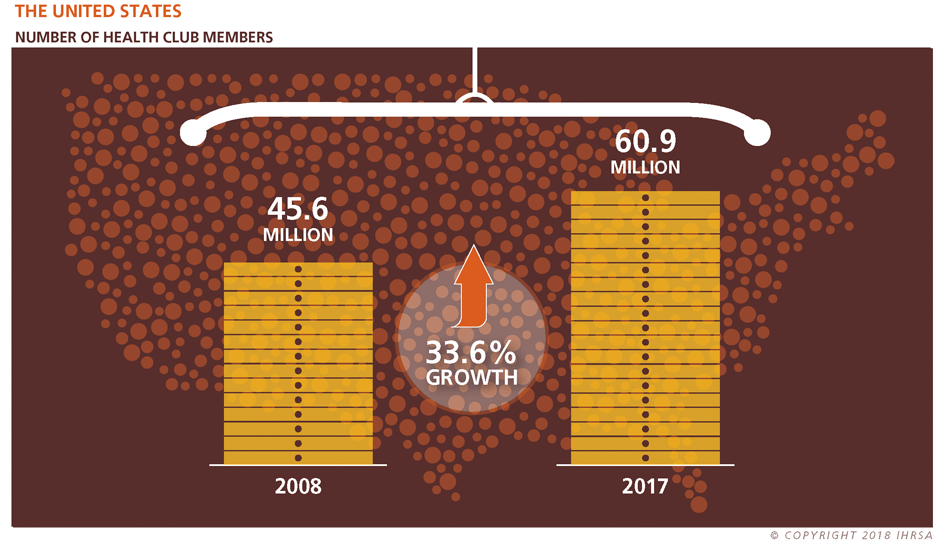
image source: ihrsa.org
Join the Conversation
We’d love to hear what you have to say.
Get in touch with us on Facebook Group and Twitter.
sources:
statista.com
ihrsa.org
5 Powerful Consumer Trends for 2019 from TrendWatching
Brands are no longer setting the pace for its consumers. In fact, it’s the other way around – these days, consumers have the upper hand over brands.
TrendWatching has identified 5 most powerful consumer trends which will influence brands in 2019.
Here they are:
- Legislative Brands
- Lab Rats
- Open Source Solutions
- Superhuman Resources
- Fantasy IRL
Let’s break them down and find out more about each one of them!
1. LEGISLATIVE BRANDS

In 2019, frustrated consumers will welcome LEGISLATIVE BRANDS: corporate interests using their significant power to call for, promote, and even impose laws that drive constructive change and make the world a better place.
TrendWatching
The concept of LEGISLATIVE BRANDS moves beyond brands supporting social issues and starting conversations by means of powerful marketing campaigns. Think Nike’s Dream Crazy and Iceland’s banned TV Christmas Advert Say Hello to Rang-tan – both powerful, both controversial. Read about them here.
In 2019, successful brands will step up their game and become a leader instead of a supporter. They will move past raising awareness; they will set out to influence and change the social issues that challenge the values they are passionate about.
The latest statistics show that more consumers link their shopping decisions to corporate values:
- 87% of consumers said they’d purchase a product because a company advocated for an issue they cared about (Cone Communications, 2017);
- 75% would refuse to purchase a product if they found out a company supported an issue contrary to their beliefs (Cone Communications, 2017);
- 86% of consumers want brands to take a stand on social issues (Shelton Group, June 2018).
Now, consumers are no longer just asking, ‘What do you stand for,’ but also, ‘What do you stand up for?’”
Alison DaSilva, Executive VP of CSR Strategy at Cone Communications
In August 2018, Microsoft published on the company’s blog the article Paid parental leave matters. In this article the company acknowledges the importance of paid parental leave which leads to “improved productivity, higher morale and lower turnover rates” and also helps “counteract gender caregiving stereotypes, neutralize stigmas and promote equity in the home and office.”
The tech company expresses concern regarding the insufficient number of companies which actively implement this policy – only 13%. As one of the largest employers in the world, Microsoft could have been satisfied with doing the bare minimum – implementing this policy. But the company didn’t stop here. Microsoft announced they will work only with suppliers which implement this policy within their organisation.
Your Turn
How committed is your brand to its values?
How willing is your brand to move beyond supporting the fight to going down in the trenches and fight the battle?
2. LAB RATS
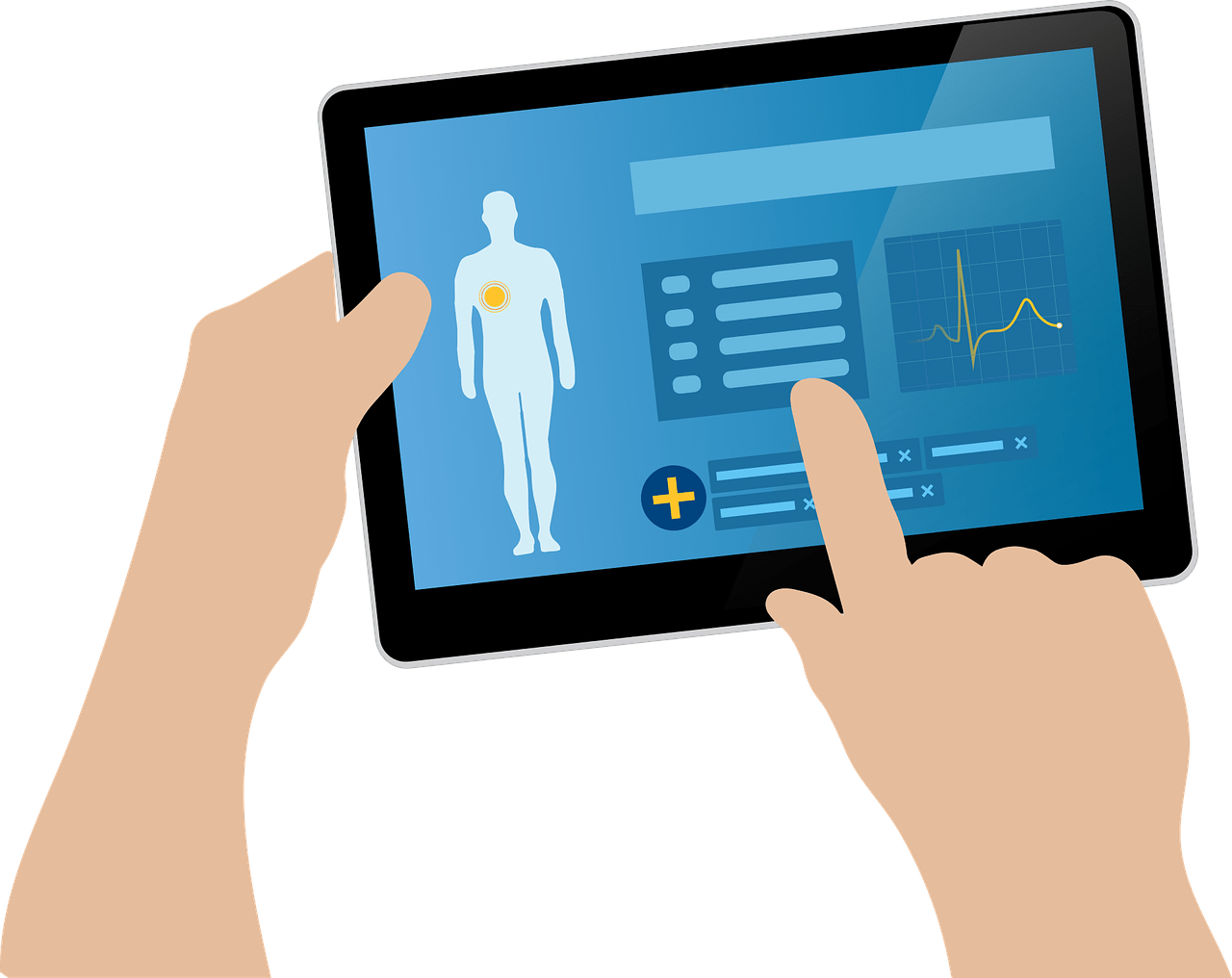
Over the past few years, being healthy meant more than attending the annual physical check-up. Today there is a plethora of apps and platforms helping consumers achieve their health and wellness goals.
Learn more: Best Apps For Health Improvement
The global wellness industry is estimated to be worth over $3.72 trillion and 2018 is predicted to be the biggest year for wellness yet (source: welltodoglobal.com).
A recent survey shows that 80% of consumers are interested in health and wellness irrespective of generations – from Baby Boomers to Millennials (source: L.E.K. Consulting, July 2018).
In 2019, LAB RATS will see human wellness and lifestyle as an engineering problem to be solved. This outlook, with its origins in the Valley, will see rising numbers enthusiastically apply a test and fix approach to optimizing their health and lifestyle outcomes.
TrendWatching
Nestle, the company whose portfolio includes brands such as Kit Kat, Lion and After Eight has made a surprising and bold move entering the market of health conscious food. The company recently launched the “Nestle Wellness Ambassador” program in Japan. The program uses artificial intelligence and DNA testing to deliver personalised diets to its 10.000 users.
Your Turn
If your company is in the health and wellness sector, there are many opportunities you can take advantage of.
If your company is not part of this industry, you can still make the best of this trend. Ask yourself how your company can drive constant optimization. How can you empower your customers to understand, control, test and fix every aspect of their experience?
3. OPEN SOURCE SOLUTIONS

In 2019, the boldest and most inspiring organizations will embrace OPEN SOURCE SOLUTIONS: sharing and even giving away their innovative solutions to our toughest shared problems.
TrendWatching
Big traditional companies founded many years ago are making efforts to reduce their negative impact on environment and society overall. Today’s companies are built on sustainable and ethical business models. They don’t need to change; the change is already part of their business DNA.
Learn more: Dell and Nikki Reed – Gold Jewellery Made From Electronic Waste
But revolutions are made with crowds, not individuals. Not even the big brands can succeed on their own. It takes a concerted effort to be successful. That’s when sharing comes into play. Companies need to create powerful solutions and then share them with the world.
Recently, Starbucks made the headlines following an incident in which two African-American customers waiting for a meeting were arrested after an employee called the police. In order to prevent such incidents from repeating, the company closed all its stores on May 29 to train its staff in identifying racial bias. The company made its program available to everyone interested in approaching racial bias on its website: The Third Place.
Your Turn
What can you do in 2019 that you can still talk about 60 years later?
Where are you making a positive impact? Could you have a bigger impact if you shared what you were doing? Could you ask your competition or other brands to join you so together you can make a relevant change in your industry or in society?
This trend is about leaving a legacy which outweighs short-term benefits.
4. SUPERHUMAN RESOURCES

In 2019, rising numbers of consumers will demand SUPERHUMAN RESOURCES: ethical AI and algorithms that deliver fair and unbiased decisions.
TrendWatching
Technology has been caught up in various scandals over the years. Google, Facebook, Amazon, Apple – they were all involved in scandals regarding copywriting, fake news and numerous law infringements. They all promised to democratize information, but they failed to mention the costs for their users.
On some occasions, the use of AI and algorithms has proved deeply flawed and bias-ridden. Cases in point:
- The facial recognition systems created by Microsoft, IBM and Megvii (Chinese company) were proved to lack reliability when they analysed faces of other races except white male;
- Amazon’s facial software used by some police departments and other organizations have incorrectly matched 28 members of Congress with people who had been arrested;
- Another AI based technology developed by Amazon was its recruiting engine; as it turned out, the engine was biased against women.
Reports have found that 97% of consumers now expect brands to use technology ethically (source: we-worldwide.com).
Beginning with 2019, consumers are holding companies accountable for the way they use tech. They are not only watching them closely, they are telling brands what they should do. Brands are way past the days of saying to the public “we’re just a platform, a medium, we are not responsible for how users use our platform” which was Mark Zuckerberg’s official stand in the immediate days following the Cambridge Analytica scandal.
It’s not just about what tech brands can do anymore. It’s about what they SHOULD do — to protect their users, to champion free speech while minimizing the harm toxic words can cause, and to create a better, more just society where information and communication tools are accessible to all.
In the aftermath of the scandal, Facebook made a 180 degrees move and began developing and implementing various programs to fight fake news, become GDPR compliant and more recently, to use AI responsibly. In an article on the Facebook code platform, the tech company has expressed its commitment to research and develop AI tools while applying questions of ethics, fairness and trust.
Our efforts to eliminate algorithmic bias and irresponsible AI deployment include careful consideration of the code we generate as well as the people we hire to write, manage, and approve those AI systems.
Facebook’s approach to a responsible AI starts with the human factor – the people writing the code. The company states that it has adopted a more inclusive hiring strategy with the belief that a “diverse workforce might prevent some problems in the planning stages of a project by bringing more points of view to the table”. If the problem escapes human eyes, the company has processes and tools in place to capture the respective issue during development. If these tools also fail to pinpoint the problem, Facebook’s last resort is the Fairness Flow, an internal tool which measures how an algorithm interacts with specific groups of people.
Your Turn
What can you do to make sure your company’s AIs are ethical and unbiased?
If AIs are not part of your company’s make up, you can still join in this trend.
Explore how your company can put AIs to good use and discover with their help important insights or start conversations around sensitive subjects.
5. FANTASY IRL
In 2019, fanciful worlds will permeate the real world as never before. As consumers seek out FANTASY IRL and play on the blurring boundaries between real and imagined, smart brands will join in the fun!
TrendWatching
The number of brands using augmented reality and virtual reality to attract, delight and retain customers has increased over the past years.
Let’s not forget the Pokémon Go craze which had millions of people worldwide playing the game in 2016.
Big brands such as Nike and BMW have delivered augmented reality powered campaigns on Snapchat.
Ray-ban, IKEA and Sephora built their own AR-based apps to ease the decision making of their customers.
Seeing this rising trend, Google announced the introduction of AR for the web, helping brands delight their website visitors with on-site AR experiences. Or you can open inter-dimensional portals.
According to emarketer.com, the global augmented reality ad revenues are expected to top $2 billion by 2022.
The virtual reality market is also on the rise with the consumer virtual reality software and hardware market expected to grow to $14.5 billion by 2021.
Your Turn
Augmented reality is already a generating revenues reality for brands using this technology. Brands are slow to adopt and implement virtual reality strategies because it involves hardware which is still costly to the average consumer.
But efforts are made towards making the VR software and hardware more easily adopted by the mainstream market.
Playing with virtual and digital tools is a lot of fun! How is your company going to offer this kind of entertainment to its consumers?
Join the Conversation
We’d love to hear what you have to say.
Get in touch with us on Facebook and Twitter.
PwC: 5 MegaTrends Affecting Your Business in 2019 (2 of 2)
PwC has identified 5 global Megatrends that shape our world. This article explores these Megatrends looking at the way they affect the global business environment.
As business owners and entrepreneurs it’s paramount to have a good grip on the present and also stand on the threshold of the future.
Let’s see how these Megatrends identified by PwC are shaping our business environment on a global scale and what you can do to make the best of them.
This article is delivered in two parts. Read the first part:
PwC: 5 MegaTrends Affecting Your Business in 2019 (1 of 2)
4. DEMOGRAPHIC AND SOCIAL CHANGE
By 2030 the world’s population is projected to rise by more than 1 billion. Equally significantly, people are living longer and having fewer children.
PwC
Challenges
By 2030 the world’s population is projected to rise by more than 1 billion, bringing the total to over 8 billion.
Emerging or developing countries will produce 97% of this population growth.
People are living longer and having fewer children.
People over 65 is the fastest growing segment of population – according to PwC there will be 390 million more of them in 2030 than in 2015.
Many advanced countries are seeing their population working age slow down its growth.
Inequality is a rapidly rising trend. To illustrate this, PwC gives the following example:
The world’s 8 richest people now own as much wealth as the poorest half of the world’s population.
The shift in demographic profile will bring disruption to the traditional life cycle of education, work and employment.
The ageing population has a direct influence on healthcare spending – it will increase. But an ageing population also means an untapped resource and businesses need to find ways to take advantage of this opportunity.
[bctt tweet=”People over 65 is the fastest growing segment of population” username=”brand_minds via @PwC_UK”]
Solutions
Here’s how businesses can take advantage of the demographic shift:
- Businesses must find ways to stimulate, incentivize and empower young people;
- They also need to harness the power of older workers and women.
There are various measures that businesses can adopt to encourage older workers to remain in the workforce:
- Create more flexibility around retirement;
- Create financial incentives;
- Adopt reforming pension rules;
- Outlaw age discrimination;
- Re-training;
- Reverse mentoring;
- Phased retirement;
- Training and apprenticeships that are normally addressed to younger recruits.
BMW is one of the companies which is leveraging the power of ageism: they have redesigned their factories for older workers.
Sweden is the best performing EU country in regard to older workers employment rates. According to PwC,
The G7’s GDP could increase by as much as $1.8 trillion in the long-term; if the G7 economies could achieve the same level of full-time equivalent employment rates among the over 55s as Sweden.
Women are a great resource for the workforce, but businesses are yet to leverage it at its full capacity.
- Women become mothers later in life and have fewer children;
- Women are a growing purchasing power: according to PwC 70% of household budgets in the G7 are controlled by women, globally 85% of consumer purchases are made by women which is equivalent to a worldwide spend of $20 trillion;
- Hiring women is highly beneficial to businesses worldwide. Reports have shown that companies with a higher percent of women in high management roles are constantly outperforming those with fewer women.
Peterson Institute for International Economics found that firms with more women in the C-Suite are 15% more profitable.
PwC
Women represent an invaluable pool of talent, skills and abilities and to attract and retain them, businesses need to take the following steps:
- Ensure that all employees are receiving fair pay and promotion;
- Support women’s career advancement to develop a pipeline of female leaders;
- Promote flexible working options.
Learn more about global recruiting trends: Global Recruiting Trends 2019 – LinkedIn Study
[bctt tweet=”Women are a great resource for the workforce, but businesses are yet to leverage it at its full capacity.” username=”brand_minds via @PwC_UK”]
5. TECHNOLOGICAL BREAKTHROUGHS
By 2020 there will be close to seven times the number of connected devices as people on the planet.
The digital revolution has no boundaries or borders. It is changing behaviour and expectations as much as the tools used to deliver new services and experiences.
PwC
Challenges
PwC has found that emerging economies are adopting technologies as fast – or in some cases faster – than developed markets.
Due to the digital revolution, the scale of the business is no longer an insurance regarding its competitive advantage, as we have shown in our Failure Series articles regarding Nokia and Kodak.
For many years, corporate technology was far more advanced that anything available to the consumer. But two key dates – 2007 and 2010 (the launches of the iPhone and the iPad respectively) – decisively shifted this imbalance in favour of the consumer.
PwC
The digital revolution has ushered in a shift in power from corporate to consumer. Now it’s the consumers driving the specifications of corporate technology, not the other way around.
The digital way of life is personified by the Millennials, the generation who was not required to adapt to digital because they were born into it. For them, technology is a form of natural language. To include the Millennials into workforce, businesses must direct their activities to fit this aspect.
Together with digital comes another important trend: social media.
Organisations need to understand that social media is not simply another channel, but a fundamentally new and different way in which people organise and live their lives. And its scale, already vast, is growing constantly.
PwC have identified the following maturing technologies:
- AI;
- Augmented Reality;
- Virtual Reality;
- IoT;
- Blockchain;
- Drones;
- Robots;
- 3D printing.
They believe these technologies offer huge potential in many industries. Their word of warning to businesses looking to embrace them is as follows:
Don’t adopt these technologies for their own sake. Experiment and learn from these technologies with the clear purpose of finding how to use them to create value. If implemented correctly, businesses can benefit galore in way of producing financial wealth.
Connected homes, connected cars, virtual interfaces, smart locks etc. – everything is connected. While ubiquitous connectivity has numerous advantages, it is not risk free. The upside of all things connected is that it is a gateway to consumer behaviour data which was previously untapped.
Many of today’s largest and leading organisations and businesses were developed in an era of scarce, expensive and rigid technology. Delivering change for them is a complex proposition. On the contrary, businesses that are ‘born digital’ are much better prepared to deal with the constant flux of change that hits everyone.
[bctt tweet=”The upside of all things connected is that it is a gateway to consumer behaviour data which was previously untapped.” username=”brand_minds via @PwC_UK”]
Solutions
MIT Sloan School of Management has found that large organisations run a greater risk of disappearing due to digital disruption over the next 5 years. The solution is the emergence of four distinct types of business model:
- Omni-Channel;
- Supplier;
- Ecosystem Driver;
- Modular Producer.
Join the Conversation
Get in touch with us on Facebook and Twitter. We’d love to hear your views!
source: https://www.pwc.co.uk/issues/megatrends.html
PwC: 5 MegaTrends Affecting Your Business in 2019 (1 of 2)
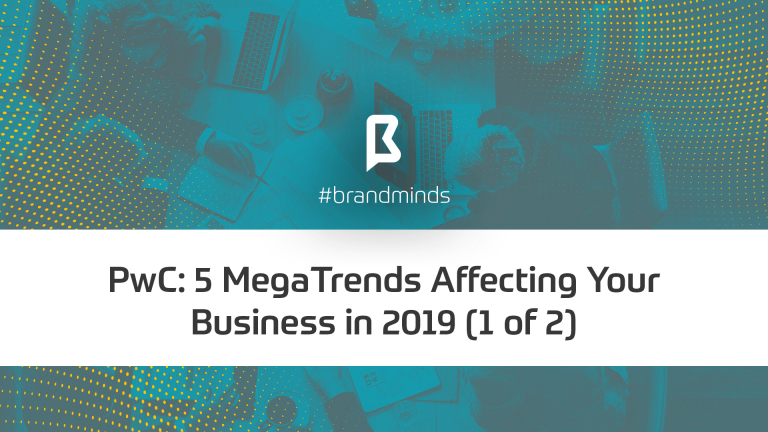
PwC has identified 5 global Megatrends that shape our world. This article explores these Megatrends looking at the way they affect the global business environment.
As business owners and entrepreneurs it’s paramount to have a good grip on the present and also stand on the threshold of the future.
Let’s see how these Megatrends identified by PwC are shaping our business environment on a global scale and what you can do to make the best of them.
Megatrends: 5 global shifts affecting your business in 2019
- Rapid urbanisation;
- Climate change and resource scarcity;
- Shift in global economic power;
- Demographic and social change;
- Technological breakthroughs.
1. RAPID URBANISATION
Today, more than half the world’s population live in urban areas and almost all of the new growth will take place in lesser known medium-sized cities of developing countries.
PwC
Challenges
Increasing global urban population: 1.5 million people migrate to cities every week.
Cities generate most of the world’s GDP: 85% in 2015.
Cities stay at the heart of any economic development because they harness the power of economies of scale; they add value for people and companies thanks to their ability to attract talent, ideas, share knowledge and support businesses development.
Cities elevate the living standards of their citizens. China is an excellent case in point:
500 million Chinese people were lifted out of poverty in less than 30 years becoming China’s booming middle class thanks to their developing cities.
[bctt tweet=”Cities represent a major opportunity for business thus becoming breeding grounds for wealth-creation” username=”brand_minds via @PwC_UK”]
To achieve that, cities must do the following:
- Increase competition with other cities for talent, investment and firms;
- Enhance levels of participation in city governance;
- Improve connectivity;
- Stimulate small business enterprises;
- Deliver inclusive infrastructure;
- Support sharing economies and micro industries.
One of the major opportunities that comes for the business environment is the emergence of new business models for delivering public services.
The current model of urbanisation is unsustainable. A crucial policy implication for government and business is not just to make the mega city workable but to address the urbanisation challenge at its source by helping to combat the distressed migration of 200,000 people a day from the countryside to the city.
PwC
The direction in which cities develop and evolve is shaped by the joint actions of city governments, citizens and businesses.
Solutions
- Businesses must act towards taking greater responsibility for the following: service delivery, infrastructure investment, environment protection etc;
- Job creation.
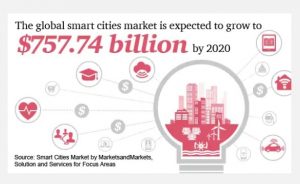
source: PwC
For large international businesses, rapid urbanisation will mean the creation of new markets. In their effort to expand globally, these companies should adopt a careful approach on how to position themselves in order to tap into the newly discovered potential.
Businesses will also see a change in their behaviours too.
The private sector will be challenged to be more open, sustainable, collaborative, innovative and flexible in their approaches.
PwC
2. CLIMATE CHANGE AND RESOURCE SCARCITY
As the world becomes more populous, urbanised and prosperous, demand for energy, food and water will rise. But the Earth has a finite amount of natural resources to satisfy this demand.
PwC
The world’s current economic model is pushing beyond the limits of the planet’s ability to cope.
Challenges
In the last years, the scientific community’s predictions were proven to be right. Unfortunately they were accurate about the rate and effect of human impact on the climate.
The planet is no longer able to support current models of production and consumption.
The rising temperatures are predicted to lead to significant and potentially irreversible environmental changes. The pressure on natural resources is expected to increase dramatically.
The numbers show that a growing global population will also mean a 35% increase in food demand by 2030. Also demand for water will increase by 40% and for energy by 50%. In Africa, another consequence of climate change is reduced agricultural productivity by ⅓ over the next 60 years.
The link between trends in climate change and resource scarcity is a stark reality and needs to be addressed appropriately.
Solutions
The global economic development will be sustainable, or it won’t be at all.
Businesses that are largely dependent on natural resources – water, land, energy – or are polluting the environment have already begun their transformation journey into responsible, ethical, waste-reducing companies. In order to achieve this goal, businesses have embraced innovation.
Learn more: Dell and Nikki Reed – Gold Jewellery made from Electronic Waste
Unpredictable climate changes and environmental policies will bring organisational changes. Businesses must assume a leading role in alleviating environmental damage while working internally to adapt to changes by adopting organisational agility.
Learn more: 22 Benefits of the Agile Organisation
Businesses must reassess their purposes. In order to survive in this challenging environment, businesses must acknowledge the need to become more than a source of profit for their shareholders. Business leaders need to look further and beyond earning money; they need to understand and measure their company’s impacts on society and environment. Businesses need to develop an ecosystem that spans over a longer period of time for ROI.
[bctt tweet=”The global economic development will be sustainable, or it won’t be at all.” username=”brand_minds via @PwC_UK”]
Companies need to become aware that moving towards a business model that is sustainable and ethical is a powerful differentiator. As various reports show, 66% of global Millennials are willing to spend more on brands that are sustainable.
3. SHIFT IN GLOBAL ECONOMIC POWER
Challenges
Between 2014-2016 many emerging markets experienced a decline in economic performance when commodity prices dropped.
Here are a few examples:
- Brazil and Russia are now in recession;
- A former champion of economic growth, China is slowing down;
- On the other hand, India is growing thanks to the following: being a net importer of oil and other commodities and therefore a beneficiary of lower global prices, more business-friendly policies to stimulate economic development and growth.
PwC has projected that
India could overtake the USA as the world’s second largest economy by 2050 (based on GDP at purchasing power parities) and should be the third largest economy ahead of Japan by 2030.
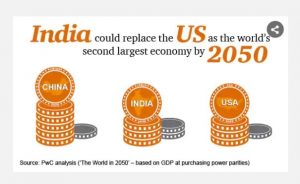
source: PwC
Solutions
Businesses that are investing, or already invested, in emerging economies will need to make a careful assessment of whether and, if so, how they should manage in these more volatile market conditions, where prospects look less certain today than they did even a few years ago.
[bctt tweet=”Brazil and Russia are in recession, China is slowing down, India is growing. ” username=”brand_minds via @PwC_UK”]
Join us next week to read part 2 of PwC: MegaTrends Affecting your Business in 2019.
Join the Conversation
Get in touch with us on Facebook and Twitter. We’d love to hear your views!
source: https://www.pwc.co.uk/issues/megatrends.html
3 popular Instagram trends in 2018
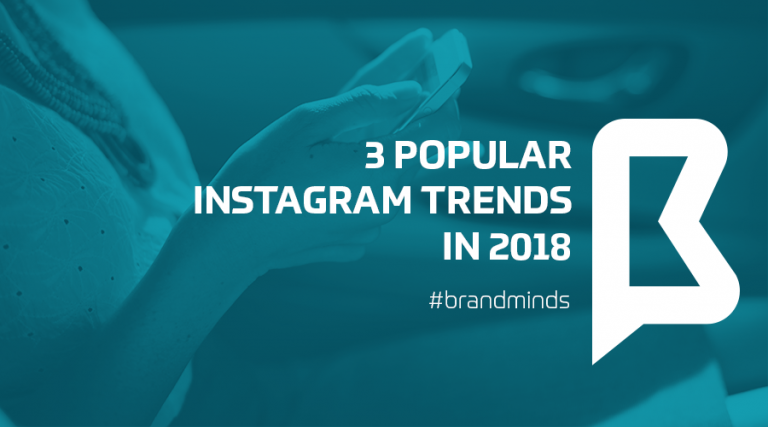
We’re only half way through 2018, but we can already notice 3 popular Instagram trends.
Discover what these 3 Instagram trends are and be inspired for your business’s online presence:
1. Travelling back in time
It’s 2018 but Instagrammers are travelling back in time.
Instagram influencers and artists have adopted the vintage and retro style aesthetics for their Instagram presence.
HUJI Cam app – Just like the year 1998
The HUJI Cam applies light filters and a 1998 date stamp on photos. The results are exciting for the Millennial Instagrammers and nostalgic for the Instagrammers that can actually remember what their lives were like in the 1998. And we all know nostalgia is a very powerful emotion that can trigger buying behaviour.
8 mm Vintage Camera – Shoot authentic retro films
The 8 mm vintage camera app takes the Instagrammers even further back in time. This app turns any video into old school vintage movies by adding various effects: dust and scratches, retro colors, flickering, light leaks, even frame shakes. Are you a fan of 1920s movies? How about the 70s? Using this app helps any Instagrammer bring a new experience to his or her followers and it definitely sparks imagination and creativity.
2. Shoppable posts for business accounts
Instagram is a product-rich social media network. There are millions of products posted every day by fashion bloggers, artists and businesses that offer their followers the opportunity to shop inside the app. The latest Instagram statistics say 60% of users discover new products through the platform and 75% of users take action because a post inspired them.
Instagram posts featuring products with shoppable tags fit perfectly with the global trend of shoppable media that is quickly gaining traction in the retail space. Social media and retail is becoming more intertwined with each passing year and we can’t refrain from asking ourselves
Is Instagram going to replace e-commerce sites?
We asked Robert Katai, Content Marketing Manager at Bannersnack this question and this is his answer:
1. Focus where the attention is today – if the attention is on Instagram, focus on Instagram. If the attention is in voice search, focus on voice search. Attention is what is really showing us where the human being is today;
2. Build your own platform – some brands are using social media just to distribute their content and that’s all. But what social media is today, even Instagram, a place where to interact, a place where to consume and connect with other through content. But your own platform – your own website, blog is only your own. What if tomorrow Instagram will be gone? What if tomorrow Facebook will be gone? You still have your own website, you still have your own blog and e-commerce where to interact with your consumers.
3. Taking to Instagram Stories to answer FAQ
Does your business have a FAQ page on its website? What about the DMs your team receives from Instagram followers? Some businesses and influencers have found FAQ to be a rich source of content. But instead of writing the answers on their webpage, they use them to make Instagram Stories. This is a great way to save your business time and engage with your audience by answering questions that will most likely continue popping up in your inbox.
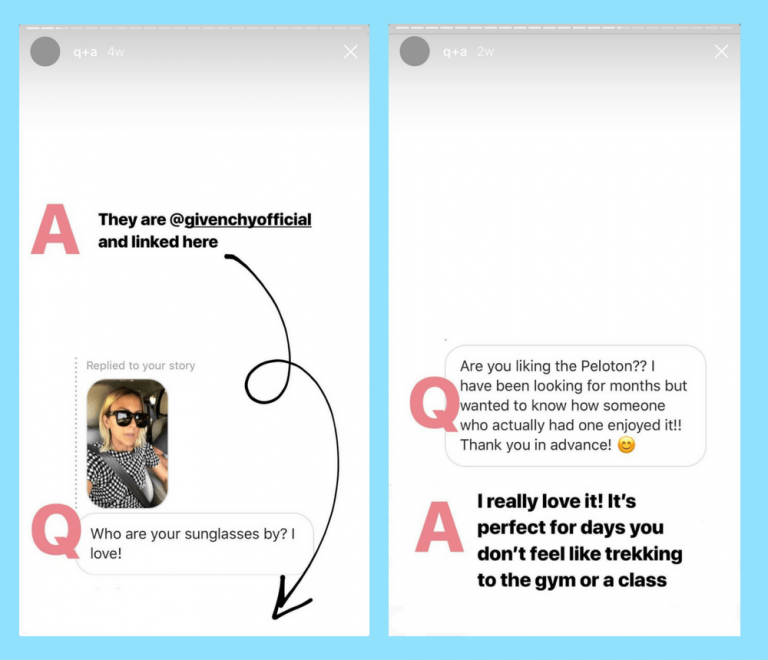 image source: later.com
image source: later.com
All About Experiential Marketing And Why To Use It
With 77% of marketers that use experiential marketing as a vital part of a brand’s advertising strategy and 98% of users feeling more inclined to purchase after attending an activation,according to EventTrack, while 80% of marketers believe live events are critical for their company’s success and 95% of marketers agreeing that live events provide attendees with a valuable opportunity to form in-person connections in an increasingly digital world,according to Bizzabo, experiential marketing is an area one must be knowing all about and use it as much as possible in 2018.
Multi-sensory experiences allow information to be encoded in multiple areas of the brain, leading to greater memory retention and retrieval.
Here are 2018’s trends in experiential marketing.
According to AdWeek, unlike advertising, experiential can’t be broken down into formatted executions—print, outdoor, radio etc. Experiential is a little more complex, is the art of “expressing a brand’s purpose and proposition through a form of real world consumer interaction.”
“Experiential is an adjective, not a noun, right? It describes a way of marketing that can be limitless in form, idea and environment. Because of this, I’d caution against the labeling of campaigns, which applies to the use of “events,” too. Events are a type of experience, but this shouldn’t be the generic descriptor for a multitude of different live creative activations,” added Sarah Priestman for AdWeek.
Brands are turning to experiential marketing to entice consumers to shop in-store rather than online. These in-store events create unique in-person shopping experiences that keep them engaged at every point while shopping. Many stores, especially beauty brands, are incorporating augmented reality for the in-store experience. The key to experiential retail integration is allowing consumers to forge real-world connections with a brand that isn’t a marketing gimmick.
How Luxury Marketing Will Look Like in 2018
The concept of luxury is changing, just like everything we are surrounded by is, like our preferences and sometimes passions. Consumer expectations of luxury continue to rise, and that what used to be luxury is now seen by the current generation of consumers, everyday experiences. And, as always, technology has a big part in this change as it makes everything easier,closer and more affordable, therefore what some years ago was considered luxury today might not be so. And just like what today is luxury in the years to come might not be anymore. The definition of luxury is changing, while “upper luxury” appears.
According to Deloitte’s “Global Powers of Luxury Goods 2018”, the world’s 100 largest luxury goods companies generated sales of US$217 billion in FY2016 and the average luxury goods annual sales for Top 100 companies is now US$2.2 billion. The report discusses the trends and issues that are driving the luxury industry. It also identifies the 100 largest luxury goods companies based on publicly available data for FY2016 (which they define as financial years ending within the 12 months to June 2017), and evaluates their performance across geographies and product sectors.
The growing importance of non-western markets for the luxury goods industry has been supported by supply chain leadership, technological innovation and international investment. These factors will help maintain further strong
growth in these geographical markets.
Deloitte’s “Global Powers of Luxury Goods 2018” points out:
Luxury brands have refocused their business strategies to capitalise on these changes. Giorgio Armani is engaged in an in-store installation collaboration agreement with Colombian artist Marta Luz Gutiérrez, while Louis Vuitton is conducting an advertising campaign using a
building designed by the late Mexican architect Luis Barragán. Rising prosperity in major cities and growing formal market power over the black market will ensure sustained Rest of the World (ROW) demand for luxury goods. To succeed in this context, luxury players should focus their investments on digital connectivity, upwardly mobile consumers and bold business models, which are key components of the
personal luxury industry today.
Some aspects that marketers must pay attention and act on in 2018:
Still according to Deloitte, collectively, Millennials and Generation Z will represent more than 40 per cent of the overall luxury goods market
by 2025, compared with around 30 per cent in 2016. Unlike Baby Boomers, many Millennial luxury consumers expect to interact with brands across a range of digital platforms, rather than only through traditional channels. Millennial consumers are also important for in-store shopping and expect a high-value, customized experience. Luxury brands should seek to change their business models to meet this demand, for example by providing more loyalty
programs and invitations to in-store events.
Customize your approach according to your audience. Personalization is still key as a marketing technique to be used as 45% of luxury consumers are asking for personalized products and services. With different expectations, younger
shoppers seek a personalized shopping experience that seamlessly integrates both online and offline platforms. This shift has motivated demand for connective technology such as Augmented Reality (AR) and Artificial Intelligence
(AI). By using AR and AI technologies, luxury brands can provide a personalized consumer experience, reach a wider audience, deepen product experience, and build stronger customer relationships. In parallel, the development of technologies such as voice commerce and the Internet of Things (IoT) are reshaping the entire luxury industry.
Luxury brands positioned as reliable sources of AI-driven recommendations are improving how they engage with consumers. More widespread adoption of AI is also making consumers increasingly reliant on suggestions and advice
provided by their various devices, rather than making decisions based on personal experience.
Social media becomes an important marketing tool for luxury as well. Instagram became the leading social media platform for fashion designers. Gucci more than doubled its Instagram followers between 2016 and March 2018, with successful Insta-campaigns such as #TFWGucci.
In future, the biggest challenge for luxury brands will be to make optimum use of social media without compromising their brand values. The success of a social media strategy will be converting “likes” into an interactive and engaging experience for customers.- Deloitte
An omnichannel approach – onnichannelluxury
A true omnichannel global market environment would require luxury brands to close gaps in customer experiences across channels, to offer a seamless, unified brand experience irrespective of the device or physical touchpoint used. Therefore, each channel needs to interact with and support
others to establish a single brand presence. Demand for an omnichannel approach is a natural development from the spread of digital technology and
e-commerce markets. During this process of change, the ability of luxury brands to leverage available inventory will be a key differentiator.
Digital must remain a priority to define an omnichannel strategy compatible with target expectations. The percentage of online sales perceived as being additional, and not a cannibalization of, physical sales is decreasing each year, with China the least cannibalized country to date.
“Luxury brands should develop their mobile strategy: 55% of luxury consumers buying online use their mobile phones versus personal computers. Peaks appear among the youngest generations and Chinese consumers, 75% and 77%, respectively, of whom use mobile. Social media and influencers are gaining power. For the first time, social media is the first source of information and the channel of primary impact used by true-luxury consumers, followed by magazines and brand websites. Five platforms (Facebook, Instagram, WeChat, Weibo, and QQ) are dominating the social media world, but Facebook is losing momentum to Instagram in the Western world and QQ is losing momentum to WeChat and Weibo in China,” states in “True-Luxury Global Consumer Insight”, the fifth edition of an annual study by The Boston Consulting Group (BCG) and Altagamma.
Millennials: Consumer Aspirations Are Disrupting Luxury
Collaborations with streetwear brands and artists are becoming the norm for Generation Zers and Millennials. “Collaboration covers demand for newness in a less risky way. It gives brands a cool edge and strengthens brand awareness as well as increases willingness to buy the brand. Collaboration is increasingly in demand and turns out to be a very effective purchasing incentive,” said Olivier Abtan, a partner in BCG’s Paris office and the global leader of the firm’s luxury, fashion, and beauty topic.
Unlike “absolute luxurers,” who buy luxury items exclusively, millennials do not hesitate to mix and match. According to BCG’s study, about 55% of this group trades down to buy handbags or T-shirts from cheaper brands, or mixes their style by buying sneakers and luxury shoes from luxury niche brands (including luxury sports). This trend appears to fulfill consumers’ need to create their own style. When they do look for different brands, it’s because luxury brands don’t have offerings in certain categories or because of the Millennials’ desire to have a unique style, express themselves, and seek out niche brands.
Use iconic personalities in your communication
With all the big changes, some things are meant to last and take the test of time. Chanel’s iconic marketing history began with a print advertisement for its perfume, Chanel No.5, in 1921. Its first celebrity endorsement didn’t feature until 1954, with Marilyn Monroe. However, it wasn’t until 2005 when Chanel first adopted videography, and from here, the rest is history.
“Despite not adopting social media and integrating the platform with videography until 2009, its marketing strategy is nothing short of stupendous. Selecting admirable public figures such as Keira Knightley and Nicole Kidman to star in Chanel’s unmistakable short films, revived the brand as an iconic symbol of both cultural and digital relevance. With the use of video and social media integration, Chanel has grown to having more than 57 million social followers globally, the highest in the luxury fashion industry. The brand focused on Facebook as their initial social media platform, due to the video capabilities such as extended video length, that Twitter and Instagram do not support. For the brand’s primary consumer, the more wealthy and mature client, Facebook was the ideal platform for accessing this demographic,” wrote Little Agency.
Sensory Branding
According to Retail Insider, British Airways is encashing big on a recent study on sensory sciences by Oxford about how sound influences the taste of food. Based on the findings of this study, they launched a list of 13 in-flight tracks to enhance the taste of the meals served during the flight, providing a truly luxurious experience. Moreover, Soundwich in Portugal delivered gourmet sandwiches packed in metal boxes that play music chosen by the chef when opened.
More ideas you can see here.
Biggest digital trends in 2018
For the last five years, the agency Ogilvy creates an annual report which aims to spot the key trends in digital and social media marketing that are likely to be important in the coming year. The report contains the agency’s predictions from the previous year and every trend includes actual, actionable recommendations for brands. In 2018, for its fifth report, Ogilvy included also a section that reflects on five years of trends, and looks at the big stories the agency’s representatives have seen play out since they started writing the report.
The report can be seen here and it features five big trends to watch for in 2018: Augmented Reality, The End of Typing, The Tragedy of the Commons in Influencer Marketing,The Amazon Awakening and Seriously Serious.
In our turn, we’ve talked with two specialists on the Romanian digital industry and we found out their predictions and thoughts.

Flavian Cristea, Digital Strategist Grapefruit:
– What do you believe will be the biggest digital trends of 2018?
The biggest digital benefits for customers will come from conversational interfaces and specialized artificial intelligence. These technologies enable customers to use natural language to interact with companies and their assets. We will be seeing more and more cases of making a bank deposit by messaging a chatbot or ordering products from the internet by using digital assistants such as Google Home or Alexa.
We are seeing specialized artificial intelligence and mixed reality as being the main drivers of digital change inside companies. These technologies are used to strengthen the capabilities of the employees, getting more out of the same individuals. It’s a complementary relationship, where the technological aspects fill in for the weaknesses of the humans and the other way around. Blockchain is also a technology that migrated from cryptocurrency to other businesses such as banking and trading, opening new ways of communicating, controlling and tracking information.
– What are they influenced by and why?
The user wants the barrier between the digital and reality to disappear. This desire appears out of the wish of the individuals to interact in a more natural way with everything they use. It’s easier to ask “How much money do I have in my account?” than to go inside a banking application and check your account. It’s also more natural to interact with objects with your hands than with your mouse.
Another obvious influencer is the progress we have achieved in the fields of artificial intelligence and virtual reality. The fact that these technologies are also researched and developed in an open way is a great contribution because everybody can experiment and share what they learned in the process.
– What is Grapefruit advising its clients this year?
We advise our customers to find contexts inside their company to experiment with each technology mentioned above. It does not have to be a big project. Just big enough that, if successful, it can become a pilot project for a bigger digital change.

Andrei Balan, Head of Strategy MRM McCann
– What do you believe will be the biggest digital trends of 2018?
Two things I’d look for in the following year are the access and sharing economy spreading to different aspects of our lives and micro targeted content.
– What are they influenced by and why?
Let’s start with the access and sharing economy. The basic idea here is the digital environment contributes to a steep increase in the number and intensity of desires. The overall digital connectedness lets us know about products and services virtually instantaneously. It also provides us with unprecedented insight into other people’s curated live, so we get to know what everyone has and does. These are both vectors for wanting more things more intensely. Moreover, things like retargeting contribute to turning these desires into quasi-obsessions. But what happens when the number and intensity of desires increases much faster than the financial means to support them? It builds up to phenomena such as the access economy, the sharing economy and then the democratization of all sorts of things and services. For example, why own music when you can just rent and listen to it? Also, people now get to travel to more distant places because Airbnb allows them to cut accommodation costs and invest more in transport. This is a simple example of touristic democratization enabled by the sharing economy.
Now let’s talk about micro targeted content. As it is becoming clearer content is winning the battle with online advertising, we’re starting to look more into what, how and why it works. Using real people, famous or not, to provide credibility to content is already something everybody does. The next base is micro targeting, or micro community-tailored content. This means building certain variations into a marketing campaign that make it more relevant for each segment of the public. And then using media targeting to reach each community with the proper variation.
– What is MRM advising its clients this year?
Our advice? Have no fear in riding the trends. I know countless people who regret not investing early in cryptocurrencies. I myself am one of them. The same thing goes with all trends: ride them early enough to be among the ones who profit most.
Marketing research done right
Either you start a new business, launch a new project / product / service or you just want to stay ahead of your competition, a strong and smart marketing research will give you the necessary advantage over the competition. Moreover, in this ever-changing and moving market, with the technology changing it day by day and with consumers always up-to- date and in control of the situation, research becomes more and more important daily. Therefore, market research is a key component of any good product team management process, sales and marketing strategy, or business growth strategy.
“Marketing research can give a business a picture of what kinds of new products and services may bring a profit. For products and services already available, marketing research can tell companies whether they are meeting their customers’ needs and expectations. By researching the answers to specific questions, small-business owners can learn whether they need to change their package design or tweak their delivery methods–and even whether they should consider offering additional services,” writes entrepreneur.com.
Research deserves its important place in a business activity and should be treated accordingly. We are presenting you some of the steps you must take in order to make sure your research is done right.
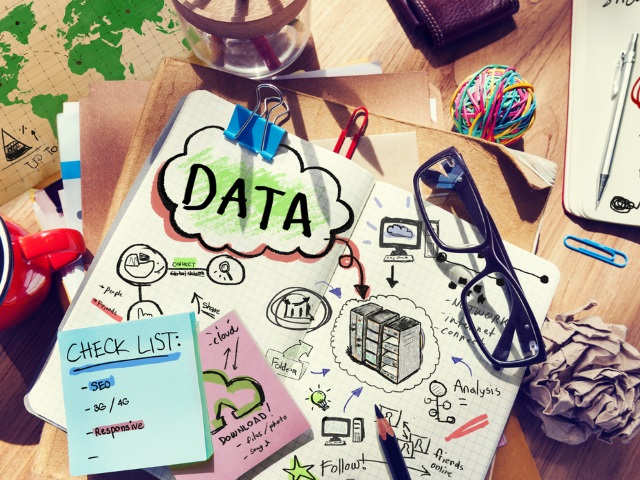
source: AdWeek
- Primary research focuses on gathering data from analyzing current sales and the effectiveness of current practices. It also takes competitors’ plans into account, giving you information about your competition. The pieces of information will be received following: interviews (qualitative and quantitative), surveys, questionnaires (online or by mail), focus groups.
2. Secondary research. Analyzing the data that has already been published. and that can help you identify competitors, establish benchmarks and identify target segments. Your segments are the people who fall into your targeted demographic–people who live a certain lifestyle, exhibit particular behavioral patterns or fall into a predetermined age group.
3. Study the Economy: Just like the history is important in knowing and understanding who we are as a culture and what we will be in the future, showing what we can expect, so is knowing and understanding the economy helping your business grow. You can better understand reports about some of the most important big factors affecting the industry you’re in and the customers you hope will spend their money on your products or services.
Being up-to-date with the economics world will help you know how to adjust your business, prevent difficult situations and choose the right time to expand.
4. Read Business and Industry Publications: Whatever your industry, there’s likely a trade group or research firm out there compiling industry statistics and trends that are all insights into your business. Join your industry trade group or follow key industry thought their leaders on social media and media (their TV, print, online appearances). Being part of the industry and its insights will help you find out detailed industry statistics and trends that can help you better understand the past, present and future of companies like yours.
5. Look Elsewhere: Take example from successful local and international businesses. A similar business on the opposite end of the country may give you some great promotional ideas, or an international market could start complaining about rising commodity prices before they affect you directly.
6. Hire a smart internal researcher and a good research agency. Your researcher will be able to present you monthly reports regarding the market and your consumers, while the agency will be a key element when making an important move on the market. They will for sure make the difference.
More ideas and steps you can find here.
Worldwide technology trends in 2017
The technology is advancing nowadays even faster than the speed of light. Its advances and upgrades can seem overwhelming, thankfully though we have the specialists to help us understand where we are heading and how to handle it. The Deloitte’s 2017 report outlines how companies presently must sift through the promotional noise and hyperbole surrounding emerging technologies to find those solutions offering real potential. To realize that potential, they should become ‘kinetic’ organizations—companies with the dexterity and vision required to thrive amid ongoing technology-fueled disruption.
While the report identifies key trends that will likely revolutionize enterprise technology in the next 18-24 months, the exponentials chapter looks even farther into the future, describing four key areas that blend science and applied technologies.
The 2017 trends identified by Deloitte, digitaltrends.com, Forbes and Gartner are as follows:
IT unbounded—The boundaries surrounding IT are fading as technology becomes integral to almost every business function and relationship.
IoT and Smart Home Tech
A multitude of wireless technologies now exist to serve your smart home needs — Zigbee, Z-Wave, Bluetooth, Wi-Fi, and more. And there’s more smart home platforms to consider than ever before too — Wink, SmartThings, Iris by Lowe’s, even systems from security providers like ADT and big brands like Comcast. While centralization in theory should make things easier, it’s made it worse.
The AI world will have a head-on collision with the Internet of Things in 2017, too, Gartner predicts. IoT is where everyday items get chips or sensors, and apps, and join the internet — from your car to your toothbrush. It makes total sense that the apps that control IoT devices will also make use of machine learning.
In 2017, watch for devices to start to communicate and help each other make decisions. “As intelligent things, such as drones, autonomous vehicles and smart appliances, permeate the environment, Gartner anticipates a shift from stand-alone intelligent things to a collaborative intelligent things model,” Gartner says. Gartner estimates that six billion connected “things” will be actively requesting support from AI platforms by 2018.
The total IoT market is estimated to grow from $157.05 billion in 2016 to $661.74 billion by 2021, predicts Markets and Markets.
Artificial Intelligence and Automation

AI and chatbots that understand context a whole lot better than ever before. More and more jobs will also be automated, we’ll also see smart devices gain from increased automation, learning your patterns and preferences without you needing to tell them and making better and more accurate suggestions and recommendations.
Research firm Markets and Markets estimates that the AI market will grow from $420 million in 2014 to $5.05 billion by 2020.
Artificial Reality and Virtual Reality
According to Gartner, virtual reality (VR) and augmented reality (AR) transform the way individuals interact with each other and with software systems creating an immersive environment. For example, VR can be used for training scenarios and remote experiences. AR, which enables a blending of the real and virtual worlds, means businesses can overlay graphics onto real-world objects, such as hidden wires on the image of a wall. Immersive experiences with AR and VR are reaching tipping points in terms of price and capability but will not replace other interface models. Over time AR and VR expand beyond visual immersion to include all human senses. Enterprises should look for targeted applications of VR and AR through 2020.
As forbes.com points out we’ve already seen some major steps forward for augmented reality (AR) and virtual reality (VR) technology in 2016. Oculus Rift was released, to positive reception, and thousands of VR apps and games followed. We also saw Pokémon Go, an AR game, explode with over 100 million downloads. The market is ready for AR and VR, and we’ve already got some early-stage devices and tech for these applications, but 2017 it’s going to be the year we see things really take off. Once they do, you’ll need to be ready for AR and VR versions of practically everything—and ample marketing opportunities to follow.
“Look for navigation services to get even more specific — maps in a store’s app, for example, to direct you to a specific aisle to find exactly what you’re looking for. So called “augmented reality,” where virtual objects and information are displayed on top of the physical world, will make its way to our phones. Search engines are already expanding on image search, allowing you to point your camera at something and search for information based on what the lens takes in,” said Ed Oswald for digitaltrends.com.
IDC predicts that worldwide revenues for the augmented reality and virtual reality (AR/VR) market will grow from $5.2 billion in 2016 to more than $162 billion in 2020.
Advances in computer vision and pattern recognition allow companies to unlock insights from unstructured data that until now, have been lost in the dark.
Machine intelligence is helping companies make better decisions, embed complex analytics into customer and employee interactions, and—with adoption of bots and robotic process automation—automate increasingly difficult tasks.
“Throughout 2017, I expect to see machine learning updates emerge across the board, entering almost any type of consumer application you can think of, from offering better recommended products based on prior purchase history to gradually improving the user experience of an analytics app. It won’t be long before machine learning becomes a kind of “new normal,” with people expecting this type of artificial intelligence as a component of every form of technology,” predicts Jayson DeMers for Forbes.
Mixed reality (Physical-Digital Integrations)
Companies are exploring more immersive and engaging ways to combine the physical world and digital systems, creating a new, mixed reality that’s more natural, intuitive and intelligent.
Mobile devices have been slowly adding technology into our daily lives. It’s rare to see anyone without a smartphone at any given time, giving us access to practically infinite information in the real-world. We already have things like site-to-store purchasing, enabling online customers to buy and pick up products in a physical retail location, but the next level will be even further integrations between physical and digital realities. Online brands like Amazon will start having more physical products, like Dash Buttons, and physical brands like Walmart will start having more digital features, like store maps and product trials.
Open standards, cloud-first designs and loosely coupled architectures are the norm in start-ups. Now, large enterprises have similar ambitions.
Traditional business products are being reimagined as services as organizations modernize core systems and the technology stack.
Digital Twin
According to Gartner, within three to five years, billions of things will be represented by digital twins, a dynamic software model of a physical thing or system. Using physics data on how the components of a thing operate and respond to the environment as well as data provided by sensors in the physical world, a digital twin can be used to analyze and simulate real world conditions, responds to changes, improve operations and add value. Digital twins function as proxies for the combination of skilled individuals (e.g., technicians) and traditional monitoring devices and controls (e.g., pressure gauges). Their proliferation will require a cultural change, as those who understand the maintenance of real-world things collaborate with data scientists and IT professionals. Digital twins of physical assets combined with digital representations of facilities and environments as well as people, businesses and processes will enable an increasingly detailed digital representation of the real world for simulation, analysis and control.

source: Blockchain Technologies
Blockchain, a way of distributing a database across many far-flung computers, is emerging as the mainstay for digital identities in the emerging trust economy.
Exponentials watch list – Advances in disruption forces like synthetic biology, energy storage, quantum computing, and nanotech could exponentially transform the way we do business. Remember the big Bitcoin phenom of 2015? It turns out that the coins themselves could be far less valuable than the underlying technology, called blockchain, that created them.
Consortiums have sprouted up to create new blockchain apps for the financial industry, for health care, and so on.
Market Reports Hub believes the global blockchain technology market will grow from $210.2 million in 2016 to $2.3 billion by 2021.
Advances in disruption forces like synthetic biology, energy storage, quantum computing, and nanotech could exponentially transform the way we do business.
Humanized Big Data (visual, empathetic, qualitative)
Big data has been a big topic for the past five years or so, when it started making headlines as a buzzword. According to Forbes, the idea is that mass quantities of gathered data—which we now have access to—can help us in everything from planning better medical treatments to executing better marketing campaigns. But big data’s greatest strength—its quantitative, numerical foundation—is also a weakness. In 2017, I expect we’ll see advancements to humanize big data, seeking more empathetic and qualitative bits of data and projecting it in a more visualized, accessible way.
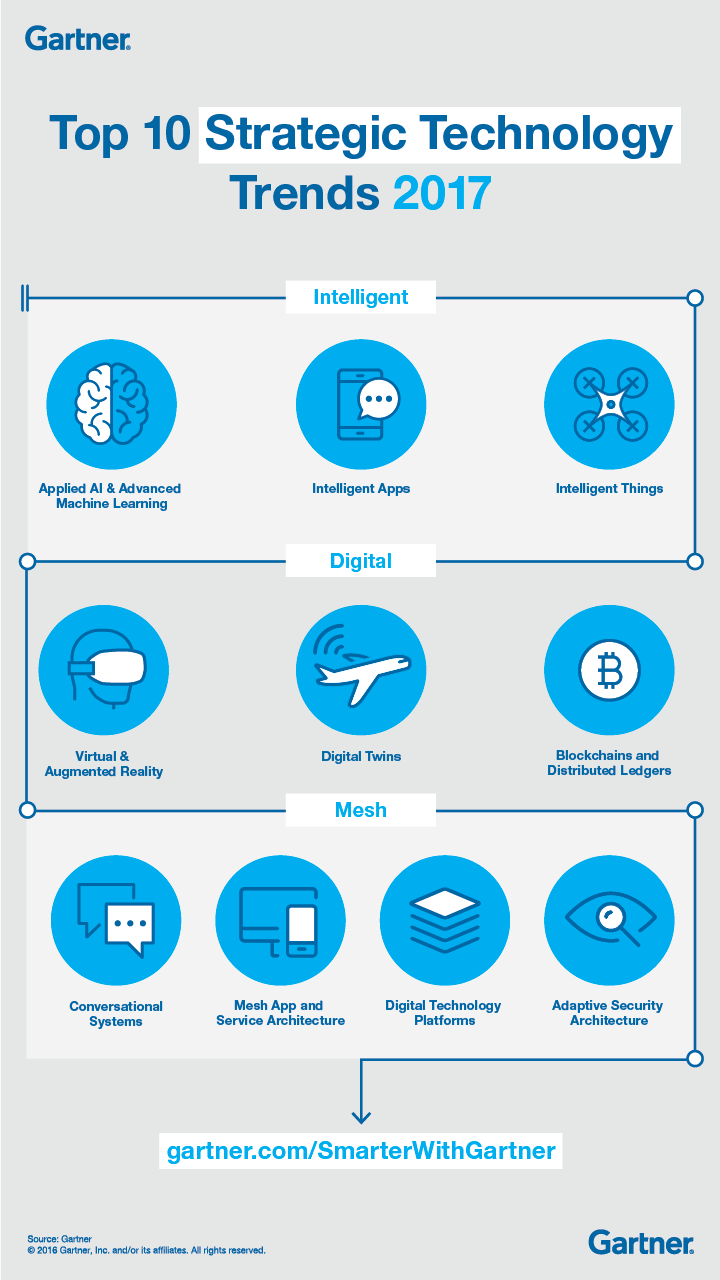
Adaptive Security Architecture
“The evolution of the intelligent digital mesh and digital technology platforms and application architectures means that security has to become fluid and adaptive. Security in the IoT environment is particularly challenging. Security teams need to work with application, solution and enterprise architects to consider security early in the design of applications or IoT solutions. Multilayered security and use of user and entity behavior analytics will become a requirement for virtually every enterprise,” points out Gartner.
6 Big Instagram 2017 Trends Any Marketer Should Know
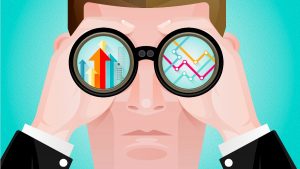
User-friendly and making the most of one of people’s favorite activity related to owning a smartphone: taking pictures, Instagram becomes steady and sure one of the Romanians main used social media tools, especially among the trendy persons. Brands are also starting to notice its impact and are taking advantage of this positive trend.
According to Zelist Monitor, quoted by instagramology.ro, 2017 started with a performance on the Romanian market: 50,518 more users in January 2017 compared to December 2016. This is the biggest growth from December to January stated in Romania so far, the predictions for February being that the total number will reach half a million users.
In this context, marketers should make sure they know the biggest 6 trends happening out-there and be ready to adopt them as fast as possible. They might fly as easily as they arrived.
- Using Trends To Get Noticed
Being aware of the latest trends can give the marketers insights into what people are looking for on Instagram. In fact, a lot of trends can be determined by doing hashtag research and finding popular content. According to sproutsocial.com, as a business, you want to be seen in some of the most popular places on Instagram. By paying attention to the latest Instagram trends, you can help get your content noticed and in front of more eyes. Branding is all about building your audience and increasing awareness about you.
- Instagram Stories
Launched in August 2017, stories aims to change the way people use Instagram. Stories allows you to tag people in updates, add a link to your content (useful for brands directing people to their site), and it even supports Boomerang.
- Instagram Direct
It’s all about fast connection to your consumers. Last year Instagram updated Direct, the messaging side of the photo-sharing app. Since then, user numbers worldwide have grown from 80 million to 300 million. With numbers like that, it’s no wonder Instagram will continue to improve this part of the service to encourage people to use the app more.
4. Instagram Shopping
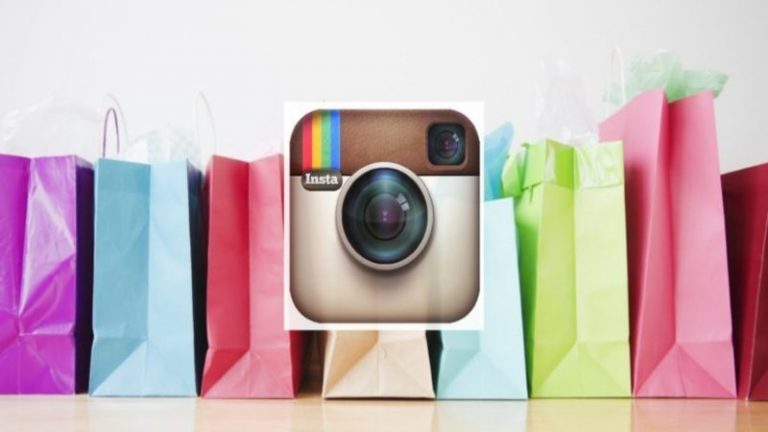
Recently, Instagram trialed shoppable product tags with 20 fashion brands, allowing the tagging of certain items in a photo. This presents a much more seamless shopping experience for the user. Rather than having to find a link in the bio, users will be able to click a tag for a detailed view of the product. The shopper can then continue researching the product without leaving the app. If the user wants to continue with the purchase, a Shop Now button will take them to the product landing page on the businesses website.
- Instagram Business Tools
The new feature allows accounts to be verified as a business account for the first time. Therefore, the marketers can add contact methods, directions to their business and unlocks access to promoted posts and analytics. Moreover, Insights on Instagram allows businesses to uncover details about their followers, such as behavior and demographics. Better knowing your customer means better business and a prolong success.
- Video is still the king of the game
According to wersm.com, One of 2017’s buzzwords is video; and video content, whether pre-recorded or live, should be leveraged by social media marketers in the next year. Instagram itself says that video will account to 75% of data in the next four years, so brands need to learn how to effectively create it and use it. The many tools that Instagram offers, have lead to the democratization of video creation, so everyone has the ability to create engaging content with little or no budget.



